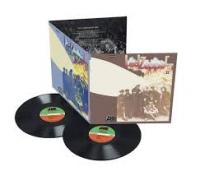One thing that is true is that someone at every label needs to decide what in their vault is valuable before the master tapes disintegrate and get them copied to 24/192 as fast as they can. I know this could be a huge project, but it needs to be done and would easily be worth someone's time at $52K a year to sit in a room and do this until finished or someone else needs to take over. I can't imagine labels not considering something like this for every major artist they have signed, now or before.
They don't need to EQ it, or compress it, or limit it, just get them transferred for posterity's sake.
I'd take that job at any label in a heartbeat.


















